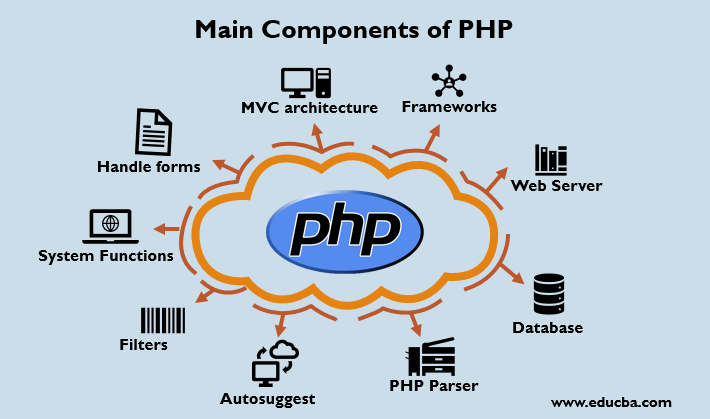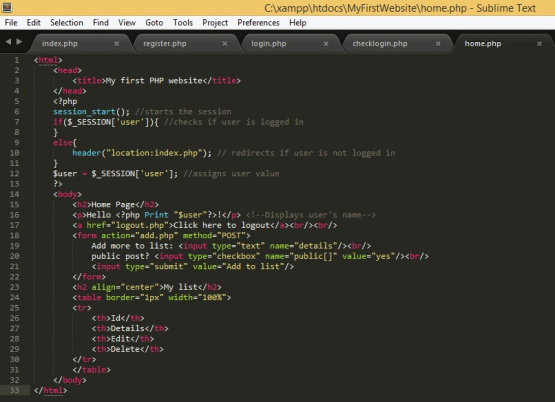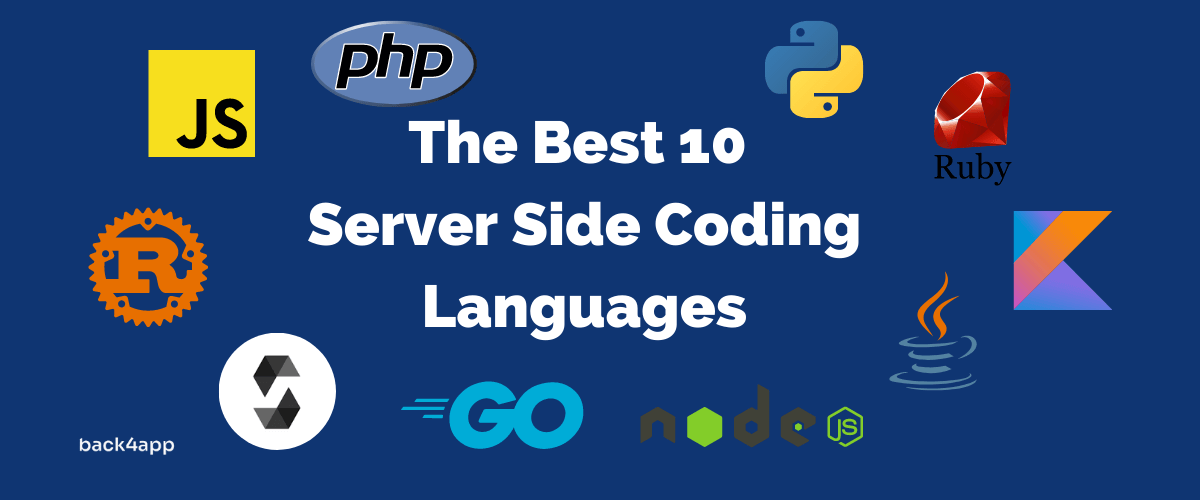The Latest Development About Php 7.4 That You Have To Know.
PHP stands for “Hypertext Preprocessor“
Yes, that’s correct. PHP originally stood for “Personal Home Page,” but it now stands for “Hypertext Preprocessor.” PHP is a widely-used open-source scripting language that is especially suited for web development and can be embedded into HTML. Here are some key aspects of PHP:
Key Features of PHP
-
Server-Side Scripting: PHP scripts are executed on the server, which means the server processes the code and sends the output to the client’s web browser.
-
Cross-Platform: PHP runs on various platforms, including Windows, Linux, Unix, and Mac OS.
-
Ease of Use: PHP is relatively easy to learn and use, with a syntax that is familiar to those who have experience with programming languages like C, Java, or Perl.
-
Open Source: PHP is free to use and is developed and maintained by a community of developers.
-
Database Integration: PHP supports a wide range of databases, including MySQL, PostgreSQL, Oracle, and SQLite, allowing for dynamic and interactive web applications.
-
Support for Various Protocols: PHP supports various protocols, such as HTTP, FTP, LDAP, and more, which can be used to create a variety of web applications.
-
Large Community: PHP has a large and active community, which means plenty of resources, libraries, and frameworks are available for developers.
-
Extensive Libraries and Frameworks: PHP has numerous libraries and frameworks, such as Laravel, Symfony, CodeIgniter, and Zend, which can streamline development and add powerful features to applications.
Common Uses of PHP
-
Web Development: PHP is primarily used for creating dynamic web pages and web applications. It can handle forms, generate dynamic page content, send and receive cookies, and more.
-
Content Management Systems (CMS): Many popular CMS platforms, such as WordPress, Joomla, and Drupal, are built using PHP.
-
E-commerce: PHP is often used in e-commerce platforms, like Magento and WooCommerce, to handle transactions, manage products, and process payments.
-
Server-Side Scripting: PHP is widely used for server-side scripting to create dynamic and interactive web pages.
-
Command-Line Scripting: PHP can be used for command-line scripting to perform various tasks outside the context of a web server.
Basic Example of PHP Code
Here is a simple example of PHP code embedded in an HTML page:
<!DOCTYPE html>
<html>
<head>
<title>My First PHP Page</title>
</head>
<body>
<h1>Welcome to My Website</h1>
echo "Hello, World!";
</body>
</html>
In this example, the PHP code <?php echo "Hello, World!"; ?> is embedded within the HTML. When the server processes this file, it executes the PHP code and sends the resulting output (in this case, “Hello, World!”) to the client’s browser.
PHP has become one of the most popular programming languages for building dynamic web apps over the years. In November, version 7.4 will come out. It is very important to know what will change with this upgrade.
PHP 7.4 has a lot of new features that are meant to make things easier for end users. As an example, this upgrade will add typed properties and preloading to help developers write better code.
We’ll look at PHP and the upcoming 7.4 update in this article. We’ll take a closer look at how the five main changes it brings may improve the user experience. There is no time to waste!
Why Is PHP Still the Best Server-Side Programming Language?
Web developers use PHP, a server-side programming language. HTP stands for “Hypertext Preprocessor,” initially derived from the term “Personal Home Page” tools. Today, it’s still one of the most widely used scripting languages on the web..
Numerous factors contribute to its popularity. PHP, for instance, may be incorporated in HTML and interacts with several other languages, including MySQL. Therefore, it is rather simple to master. In addition, there is no license charge and the software is open-source.
In addition, PHP makes it simple to set up and develop a website. There is a robust community of users who are willing to answer questions, as well as an abundance of documentation to help you get started. In addition, it is simple to discover developers who are fluent in the language while assembling a team.
It’s inevitable that PHP will have new versions, since it’s a widely used application. It is usually necessary to change and build new features in order to keep up with technological improvements.. The most recent big version, PHP 7, introduced several improvements, but lesser updates may often be very game-changing.
Five Important Changes to PHP 7.4
With the next release on November 28, 2019, PHP seems more robust than ever. Here are a few of the most significant new features in PHP 7.4.
- Preloading to Enhance Performance: A rise in efficiency is always welcome. Opcache, a new feature in PHP 7.4, lets you configure your code to compile and then store it in shared memory. Improved performance allows you to operate more efficiently, provide a better user experience, and meet those looming deadlines.
- Adding Arrow Functions to One-Line Functions: Anything that allows you to write quicker code is a beneficial UX enhancement for PHP. The good news is that version 7.4 will contain arrow functions, which allow anonymous functions to be shortened. The expression for arrow functions is defined in the parent scope. In this sense, they may surely aid in reducing the verbosity of your code.
- Properties Typed for Cleaner Code: Typed properties, like arrow functions, assist to clear up your code, which is another great feature. Typed properties facilitate the declaration of type hints for class variables and properties. This is advantageous since it reduces unneeded boilerplate code. It achieves so by ensuring that getter and setter methods are not required to enforce type contracts.
- WeakReferences for Retaining an Object Reference: WeakReferences let you keep a reference to an object even if it is destroyed. WeakReferences help when you need to index a reference in an object-oriented design. If you install the PECL Weakref extension, you can use them to improve UX for some projects.
- Deprecations for PHP 8.0 Preparation: Deprecations are obsolete features that will no longer work after the installation of an upgrade. Among the deprecations to watch out for in PHP 7.4 are the following:
1. Short open tags should be eliminated.
2. The left-associative ternary operator will likely be deleted, therefore explicit parentheses will be required instead.
3. Square brackets have taken the place of curly brackets in syntax.
4. These modifications are in preparation for the next major PHP 8.0 version. As the programme advances, more deprecated functions and commands will be replaced with new functions and commands.
To learn PHP, why?
Why Learn PHP?
PHP, which stands for Hypertext Preprocessor, is a widely-used open-source scripting language designed for web development. It is especially suited for creating dynamic and interactive web pages. Despite the emergence of many other programming languages and frameworks, PHP remains a staple in the world of web development. Here are several compelling reasons why learning PHP is beneficial:
1. Popularity and Demand
PHP is one of the most popular programming languages for web development. It powers a significant portion of the internet, including major platforms like WordPress, Facebook, and Wikipedia. As a result, there is a constant demand for PHP developers in the job market. Learning PHP can open up numerous job opportunities and career paths in web development.
2. Ease of Learning
PHP is known for its simplicity and ease of learning, making it an ideal choice for beginners. The syntax is straightforward and resembles that of other programming languages like C and Perl, which makes it easier for new programmers to pick up. Additionally, there are abundant resources, tutorials, and communities available to support learners.
3. Extensive Documentation and Community Support
One of the significant advantages of PHP is its extensive documentation and active community support. The official PHP documentation is comprehensive and well-maintained, providing detailed information and examples for every feature of the language. Moreover, the large PHP community is always ready to help, with numerous forums, discussion groups, and online communities where you can ask questions and share knowledge.
4. Versatility and Flexibility
PHP is a versatile language that can be used for a wide range of web development tasks. Whether you are building a small personal blog or a large enterprise-level application, PHP has the tools and frameworks to support your project. It integrates seamlessly with various databases, supports different web servers, and is compatible with numerous operating systems.
5. Open-Source and Free
PHP is open-source, which means it is free to use and modify. This makes it accessible to anyone, regardless of budget, and encourages a collaborative environment where developers can contribute to and benefit from shared resources. The open-source nature of PHP has led to the creation of many powerful frameworks and tools that enhance its capabilities.
6. Wide Adoption and Integration
PHP is widely adopted and integrates well with many technologies and platforms. Content management systems (CMS) like WordPress, Joomla, and Drupal are built on PHP, making it a critical skill for web developers working with these systems. Additionally, PHP can be easily integrated with various databases (e.g., MySQL, PostgreSQL), web servers (e.g., Apache, Nginx), and other programming languages.
7. Efficient Development and Performance
PHP is designed to be fast and efficient. It executes scripts on the server side, which can lead to better performance for web applications. With features like caching, load balancing, and optimization techniques, PHP can handle high traffic and complex tasks efficiently. Moreover, modern PHP versions come with significant performance improvements, making it a robust choice for web development.
8. Rich Framework Ecosystem
PHP has a rich ecosystem of frameworks that simplify and speed up web development. Popular frameworks like Laravel, Symfony, CodeIgniter, and Zend provide pre-built modules, tools, and libraries that help developers create scalable and secure applications more quickly. These frameworks follow best practices and design patterns, ensuring that your code is maintainable and efficient.
9. Career Advancement and Freelancing Opportunities
Learning PHP can significantly enhance your career prospects. Many companies, ranging from startups to large enterprises, seek skilled PHP developers for their web development projects. Additionally, PHP knowledge opens up opportunities for freelancing and contract work, allowing you to work on diverse projects and clients from around the world.
10. Stable and Mature Language
PHP has been around for over two decades, making it a mature and stable language. It has undergone continuous improvements and updates, ensuring that it remains relevant and up-to-date with modern web development practices. The stability and maturity of PHP mean that you can rely on it for building robust and secure applications.
PHP began as a small open source project that grew as more and more people learned how useful it was. He released the first version of PHP in 1994.
If you want to be a good software engineer, you need to learn PHP. This is true especially if you work in the Web Development field. In this post, I’ll show you why you should learn PHP:
- Hypertext Preprocessor: PHP stands for “PHP: Hypertext Preprocessor.”
- PHP is a scripting language that runs on the server and is built into the HTML code. Dynamic content, databases, session tracking (even whole e-commerce sites) can all be managed with this tool.
- It can connect to a wide range of popular databases. Other options include Sybase and Informix, as well as Microsoft SQL Server and MySQL.
- PHP runs very quickly, especially when it is compiled as an Apache module on the Unix side. Once the MySQL server is up and running, it can run complex queries with huge results sets in record time.
- People who use PHP can use a lot of important protocols, like POP3, IMAP, and LDAP. PHP4 added support for Java and distributed object architectures like COM and CORBA, which made n-tier development possible for the first time in the history of the web language.
- People who write PHP try to be as kind as possible.
- In PHP, the syntax is a lot like that of the language C.
Seven types of operators can be found in PHP:
1. Operators that do math
2. Using operators, this may be accomplished
3. Operators that compare two things
4. Operators that increase and decrease
5. Operators that make sense in a way
6. These are the people who work with strings.
7. Array operators are used to add and remove items from an array.
PHP Tutorial: How to write in PHP Whether you’re a beginner or an expert, this tutorial will give you a thorough understanding of the PHP scripting language. Our PHP tutorial will make it easy for you to learn the PHP scripting language quickly.
All the things you need to know about PHP are covered in this tutorial. It starts with an introduction and then shows you how to write control statements and functions. Then it shows you how to use arrays, strings, files and forms. It also talks about regular expressions, dates and times, object-oriented programming in php, math, and PHP MySQL.
How to download PHP?
Php can be used to download files. The most recent version of PHP can be downloaded from http://www.php.net/downloads.php. The Windows system must be operational before you can execute PHP programmes.
If you don’t, you won’t be able to use them. Either WAMP server or AMPPS server can be used to set up PHP, MySQL, and Apache Web Server on a Windows system.
Web developers will find a lot of big changes and new features in this release. We’ve seen that they consist of:
Php vs Javascript: which is better?
- PHP doesn’t run in the browser, but Javascript runs in the browser.
- PHP has a database, but Javascript doesn’t have a database.
- Both upper and lower case variables can be used in PHP, but Javascript doesn’t let you use them in your code.
- When we compare PHP and JavaScript, PHP doesn’t let us switch between Objects and Arrays, but JavaScript lets us switch between Objects and Arrays.
Conclusion
Since the 1990s, PHP has been one of the most popular server-side languages for writing code. It is still growing to this day, with a November 2019 update.
This release has a lot of big changes and new features for web developers. As we’ve seen, they’re made up of:
- Preloading in order to improve performance
- In place of arrow functions, one-line functions were used.
- Typed attributes make the code better.
- WeakReferences are used to keep track of an object.
- The deprecations before PHP 8.0.
Frequently Asked Questions
PHP is a little bit case sensitive. When you write variable names, they have to be capitalized. When you write function names, they are not. Function names can be written in lowercase, but you can still use them. It doesn’t matter how you write your own functions, but the rest of the language is case-sensitive.
The PHP parsing engine needs a way to tell PHP code from other parts of the page. As a way to do this, it is called “escaping to PHP.” A way to make quotes in a string less confusing is to “escape” them.
Subclasses cannot alter a method that has the final word in its declaration.Creating a subclass of a final class is not possibleClasses that cannot be altered, such as String, may benefit greatly from this technique is impossible to make properties definitive.
PHP and Javascript cannot communicate because PHP is a server-side language and Javascript is a client-side language.We may exchange variables, though, since PHP can produce Javascript code for the browser to execute, and it is feasible to send particular variables back to PHP through the URL.
You can use a PHP script you’ve written to make HTML. PHP can also be given parts of HTML. PHP is a language for the server, and HTML is a language for the client. PHP runs on the server and returns strings, arrays, and objects as results. We then use them to show the values in HTML.
A few of the most well-known frameworks in PHP are:
- CakePHP
- CodeIgniter
- Yii 2
- Symfony
- Zend Framework
It’s important to know what a PHP function [native code] Object() and a destructor are. When a PHP class object is created or deleted, these special functions are run. The contructor is the most significant of the two since it allows you pass parameters along when you construct a new object. These arguments may then be used to configure the object’s variables.




